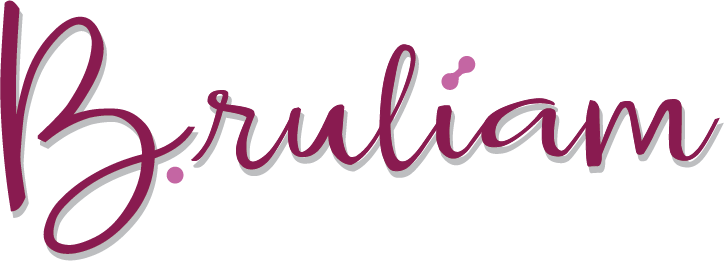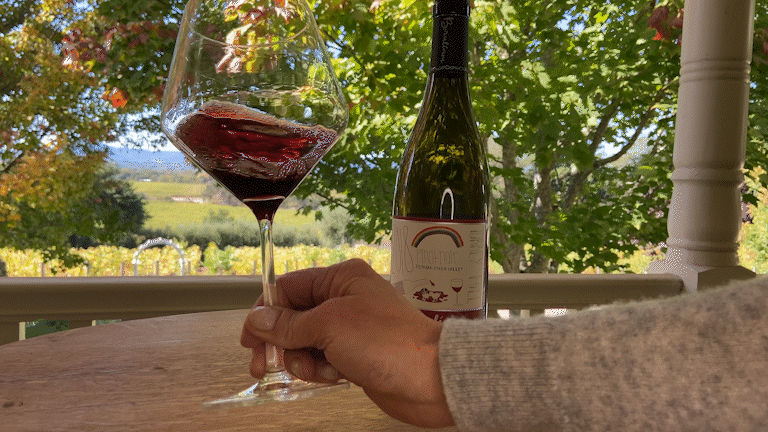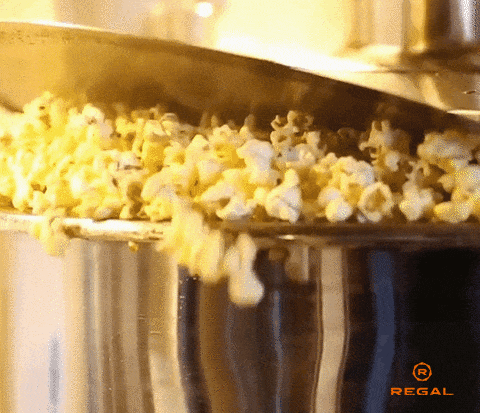What Is Dry Red Wine?
The phrase dry red wine means something very specific for winemakers. When winemakers talk about a dry red wine, we mean a wine with less than 2 g/L residual sugar, as measured in glucose + fructose.
Yeah, I know, very un-sexy.
Less than 2g/L residual sugar will never evoke fat bunches of glorious grapes basking in the Sonoma sunshine. Quantifying glucose + fructose sounds more draconian diet plan than “wine as sunlight, held together by water.”
But if you’re looking for a wine that is delicious but also consistent, unflawed, and clear in your glass, this definition is critical. To me, dry red wine is a proxy for microbial stability.
Hi, my name is Kerith, and I am a recovering surgical pathologist. OK, no AA jokes here, but I come to wine from a love of microbiology, so let’s explore what the phrase dry red wine is all about.
“S. cerevisiae
budding, uni-cell fungus
happy to make wine”
Yes - a haiku ode to our winemaking yeast friend is where we begin our exploration of dry red wine.
As you well know, S. cerevisiae (“Sacch”) is content to metabolize grape sugar into wine - pretty much every time. Lacking the creativity, internal machinery or motivation to do otherwise, wine yeast render the biochemistry of wine relatively straightforward. Sacch converts grape sugars into dry red wine.
But Sacch is not the only yeast playing in the vineyard or colonizing the winery. So, without further adieu, let’s meet our first pugnacious pillagers, those rotten ravagers of ripe berries, the vile vandals of Vitis vinifera…heeeeeeeeere’s yeast!
The Science Behind Dry Red Wine
Despite the incomprehensible arsenal of microbial players infesting planet Earth, only 15 yeast species exist on grapes. These select microbial critters both ferment grape juice to wine (hooray!) and initiate wine spoilage (boo!). And unfortunately, since yeast are ubiquitous, both helpful and detrimental vermin coat the surface of the grape berry from bud break straight through to harvest.
Before we even add our own proprietary “good” yeast to the fermentation bin, 103-105 “native” yeast already call each grape berry home. Face it; it’s crowded out there. If you wanna make dry red wine, your yeast better be able to outcompete the other players. Only the hungriest, cut-throat yeast will survive this fungus-eats-fungus sugar melee. Only one species will devour those last molecules of sugar before the hexose buffet shuts down for the season.
The winner must withstand a low oxygen environment, a rising tide of alcohol, and ever-dwindling sugar. These four factors alone quash most of the competition. Only Saccharomyces cerevisiae is inherently built to survive to the end, converting sugar to dry red wine. Whether “native” yeast or an exogenous inoculum completes alcoholic fermentation, it’s nearly always a member of the S. cerevisiae clan.
Yes, even the “natives” are Saccharomyces kin that have infiltrated winery walls, equipment, and machinery. But interestingly, S. cerevisiae rolls incognito in the vineyard. Rare on grape berries, it is almost never identified in laboratory berry Rare on grape berries, it is almost never identified in laboratory berry cultures. That’s because Saccharomyces don’t usually start fermentation; they just finish it. Bluntly, thugs like Hanseniaspora are fluffers; Saccharomyces is a closer.
When berries are harvested, wine grapes host a hodgepodge amalgam of mixed microflora. It’s like a Benetton ad circa 1986- a mélange of yeast colors, shapes, and sizes. Saccharomyces gets poised to conquer about 20 hours into it. After peacefully coexisting with their mixed microbial brethren (“lag” phase), Saccharomyces finally hunker down and outsex them (“log” phase).
Faster than the Dugger clan can pinch out another kid, Saccharomyces explode onto the scene, thriving in the low oxygen, high alcohol hot tub. Any holdout fugitive species perish, as Saccharomyces dominate and finish the job. At least that’s how it’s supposed to happen when you convert pinot noir grapes into dry red wine.
What It Means To “Go Native” In Winemaking
Dry red wine results from the conversion of glucose and fructose into alcohol by specific yeast. Whether a winemaker allows the native yeast in the winery to complete this transformation or inoculates with a commercial strain of yeast, Sacch is always the dominant player in the end. When winemakers rely on the indigenous and ubiquitous yeast in the air to convert sugar to wine, it’s called a “native fermentation.” Winemakers describe “going native.” This term is fairly evocative.
Some wine lovers (but not I) might imagine hunky Chippendale dancers in beige loincloths grinding in time to thumping techno music. Going native! Yes, I wish "going native" were that sexy; we'd increase our female readership tenfold, especially with video footage.
But in the wacky world of wine, going native is mundane. Typically, we warm the tank a bit and wait, and wait, and wait, fingers crossed, for those first bubbles to percolate to the surface, letting the "native" yeast on the berries' surface transform juice to wine. Some consider going native is considered a point of pride, a badge of enology honor.
Vintners love to boast about their "resident yeast," as if they've adopted and coddled these single-celled critters like a well-loved Chia pet. Using native yeast inspires passionate sentiments like "we're all-natural," "we prefer minimal intervention," or "we never, ever consider using sterile, store-bought yeast." And this is repeated again and again- without irony.
While wine yeast microbiologists stress that yeast strain has minimal effect on finished wine flavors, (perhaps very young wines excepted), fervent, native yeast proponents insist otherwise. Sometimes I let a tank or lot “go native.” More often than not, I’ll let a tank start native, form a cap, and then inoculate with commercial yeast. I generally lack the patience and temperament to “go native.” That said, dry red wine is dry red wine, so long as the sugar and nutrients get consumed along the way.
The Moods And Flights Of Yeast
The flip side of this favored fungus is my nail-biting anxiety that "native yeast" can be unpredictable, less hearty, and sporadically die off before their job is done. For instance, too much heat or too much alcohol, both natural by-products of fermentation, can kill them.
Or sometimes they're extra sensitive to the sulfur dioxide required to hold spoilage bacteria at bay- not good. On the other hand, commercial yeast is bred to withstand the rising alcohol concentrations and temperatures that accompany brisk fermentation. Less glamorous, perhaps, but at least surviving the arc of fermentation is assured.
Like reliable old Hondas, commercial strains promise a vigorous, reproducible, predictable fermentation- every time. This is a plodding but consistent way to produce dry red wine. Furthermore, the U.C. Davis enology staff cautions students ad nauseam that “off-odors” are a very real consequence of native fermentations. This makes me nervous. Again, it’s my temperament.
So, You Want To Make Dry Red Wine…
If your job is making dry red wine, you’ll discover that nearly all winemaking yeast is the same genus, Saccharomyces. The great majority are even the same species, Saccharomyces cerevisiae.
This is the very same stuff you use to make beer or bread (you know those paper packets of Fleishman's activated yeast from Vons?). That yeast lives on grape berries naturally, along with their other microbial buddies, in greater and lesser percentages. "Going native" just presupposes that Mother Nature's S. cerevisiae out-compete their microscopic neighbors.
And after press, when all of those "natural" winemakers dump the mucky, grape leftovers back into their fields as compost and fertilizer, that yeast just gets recycled next season. And as soon as the winemaker uses a commercial strain, it outcompetes other strains to dominate the winery. Often a “native strain” is the same as a commercial one, if you’re testing DNA. At Bruliam Wines, my yeast choices are simply a reflection of developing the right style, texture, and sensibility for a specific vineyard site.
Secondary fermentation is also called malolactic fermentation. Like primary fermentation with yeast, malolactic fermentation (MLF) also is mediated by microscopic critters that imbibe one wine component (malic acid) and spit out another (lactic acid).
The star player is Oenococcus oeni (O. oeni), a heterofermentive lactic acid bacterium, famous for its ability to convert glucose (sugar) into lactic acid plus carbon dioxide, acetate, and ethanol (wine). As with wine yeast, there are clones within the Oenococcus species and fancy DNA manipulations that distinguish Mr. Frank Oenococcus from Mr. Jack Oenococcus and Mr. Mark Oenococcus. And like with primary fermentation, MLF occurs either spontaneously or is forced by inoculation with laboratory bacteria.
However, quite unlike primary fermentation with yeast, this step is entirely optional. Even without it, you still have drinkable wine, perhaps even terrific wine. But in general, MLF, the conversion of malic acid to lactic acid via bacteria, is a process that ups the ante in premium wines. In fact, most of the wines you drink have probably undergone MLF, and you didn't even know it, since you're so accustomed to enjoying it. MLF heightens wines' aromas, increases its complexity, and enhances all organoleptic qualities across the board, from creamy, mid-palate weight to fragrant bouquet.
By products of this chemical conversion include spooky names like ethyl lactate which embellishes a wine's fullness and body and diacetyl, the curious compound responsible for that fat, buttery popcorn aroma in some oaky chards. After MLF, wines become softer, more approachable, and less aggressive (and no, it cannot be applied to your hyperactive puppy or terrorizing toddler).
MLF also imparts velvety softness, greater body, and a richer, fuller texture (and no, you can't apply it to your hair either). You see, MLF transforms malic acid, imagined as the biting tartness of unripe, green apples, into softer, mellower milk acid (lactic acid). With MLF, a wine's overall acidity decreases via direct decarboxylation. For every molecule of malic acid, one acid group evaporates- poof- with its resultant gustatory pleasures. It is a critical step in the production of most dry red wine.
Now stay with me friends.
This is the chemical structure that defines carboxylic acid (R-CO2H):
Malic acid is a DIcarboxylic acid, HO2C-CH2-CH(OH)-CO2H, containing 2 of those CO2H guys, one flanking either end of the molecule. Compare this to lactic acid, a MONOcarboxylic acid, HO2C- CH(OH)- CH3, which has only one CO2H. (FYI: the other CO2H evaporates into the air as carbon dioxide, CO2). And there it is! You have literally LOST an acid group, molecule for molecule, transforming a chemical with two CO2H guys into a chemical with only one CO2H guy.
So not only do you have fewer "CO2H guys" overall (less acid) but also, you've replaced puckery, tart, green apple acid with softer, richer milk acid. Voila, the magic of chemistry! (Now don't you wish you'd stayed awake in that 7th-grade chemistry class instead of throwing spitballs in Amy's hair?). This stuff helps you understand the complexities of dry red wine.
Now that you understand the steps in making dry red wine, let’s tackle the why’s. So why does this impressive creature, Oneococcus, use malic acid anyway? Why can't he eat sugar yeast? Lactic acid isn't buttery, is it? So where's the butter from? Hey, didn't you mention something about acetate up there? Isn't that vinegar? If you've already got wine without MLF, why bother? The answers to these and other enticing chemical quandaries will be addressed next.
A Deeper Dive Into Lactic Acid’s Role in Dry Red Wine
Compared to yeast, lactic acid bacteria, of the sort responsible for malolactic fermentation, present a greater scientific challenge in the production of dry red wine as they possess more tricks in their sugar-consuming armamentarium. For instance, both yeast and lactic acid bacteria disassemble glucose and fructose (collectively called hexoses because they have 6 carbons) into stuff called pyruvate.
But only lactic acid bacteria uniquely transform pyruvate into lactic acid. It is this so-called "lactic fermentation" that categorizes their kind. And this is OK; we like lactic acid in our wine. But what happens when they eat other junk, beyond simple grape sugars? Thinking caps on; biochemistry ahead. Here we go.
Like cockroaches feasting on garbage, lactic acid bacteria can digest all sorts of stuff, like 5 carbon sugars, citric acid, and malic acid, especially when grape sugar concentrations are low. You already know how they turn sour-apple malic acid into mellow, round lactic milk acid, so now let's tackle the other stuff.
First up: the 5 carbon pentoses (think of a stop sign- a 5 sided pentagon). For this, lactic acid bacteria must engage their "pentose phosphate pathway" since 5 carbon grape sugars are chewed up differently than 6 carbon sugars. Like the sixers (hexoses), sometimes the fivers (pentoses) end up as ethanol - i.e., wine.
Other times, they end up as acetate. Vexing. Citric acid metabolism is even crazier. Imagine a candy factory with a conveyor belt that sends bulk chocolate down one path to get M&M's, another for Snickers, and a third for basic Hershey's bars. Same starting material- different end products.
In the same way, lactic acid bacteria digest citric acid, a principal organic acid of wine, in different ways depending on their different environmental conditions. Transported through one door, citric acid becomes a source of acetoin compounds - like the buttery popcorn smell - yum!
Or it can be transformed into lactate (that's OK) or even wine (better yet!). Sometimes though, citric acid is converted into cellular material, bricks and mortar to fix bacterial cell walls, and the by-product is acetic acid (yuck). Luckily for winemakers, we can predict the conditions that favor butter over vinegar, so we load the biochemical roulette wheel to our liking. Therefore understanding the complexities of crafting dry red wine is critical.
Fermenting wine is a smorgasbord of bacterial food options, so much food and so many ways to eat it. Perhaps this helps you understand why malolactic fermentation is so critical to making stable and consistent dry red wine.
Beyond the mega organoleptic qualities, secondary fermentation promotes microbiological stability. In other words, through MLF, we control how and when wine bacteria consume all their available nutrients - from grape sugar to the weird stuff like pentoses and citrate.
Last thing we'd want is for some rambunctious bacteria to go crazy in your bottle of Bruliam; I'd be mortified if you uncorked fizzy vinegar at your next dinner party. When secondary fermentation is part of making dry red wine, we can inoculate for MLF to ensure every particle of bacterial sustenance is consumed before we bottle. Vinifying dry red wine is exciting, complicated, and fun.
Have any additional questions about dry red wine? Interested in trying Bruliam Wines for yourself? Click here.









